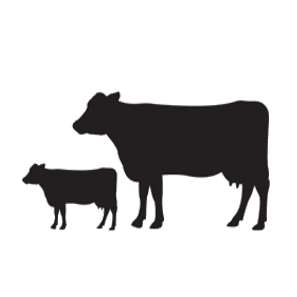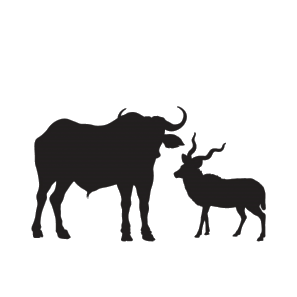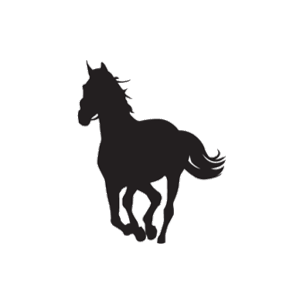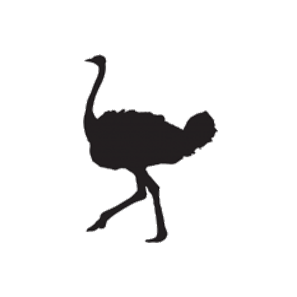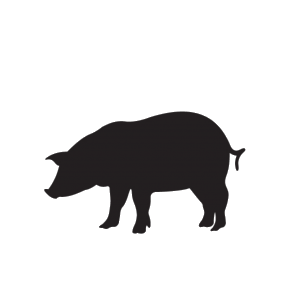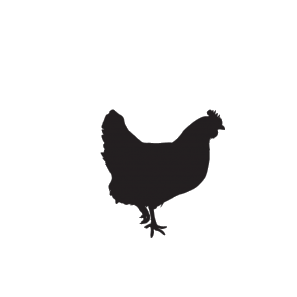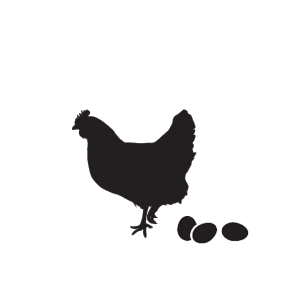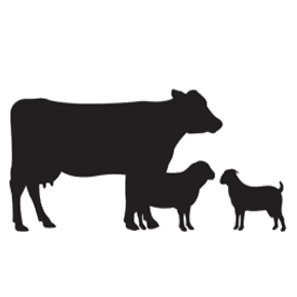Dr Vlok Ferreira, National Ruminant Technical Manager Ruminants
Email: vlok.ferreira@rclfoods.com
Due management and nutrition of bulls are essential to the cow-calf producer to ensure maximum reproduction and genetic efficacy of his herd. Various factors affect fertility. Firstly, a bull must be well developed and in puberty. Secondly, physical characteristics such as scrotal circumference, mating skill and semen quality play an important role in the fertility of the bull. Thirdly, libido and social dominance, where more than one bull is used in a herd of cows, also affect the bull’s ability to mate.
POST-WEANING GROWTH: 7 TO 12 MONTHS OLD
Bull calves weaned at +- 200 days old, should have reached between 26 – 34% of their mature weight (Table 1). Under normal summer pasture rainfall conditions the calf should be able to reach the weight with the cow’s milk, the pasture intake and a phosphate lick supplement. Use Molatek Foslick (V 16059; N-FF 1407) or Fosblock (V 22502; N-FF 2471) with and intake of +- 180g/animal/day. Weaned bull calves must be dewormed and treated against liver fluke if present in the area. Bulls must also be tested annually for brucellosis, BVD, IBR and trichomoniasis. Also treat against external parasites when necessary. From weaning to 12 months old bulls should be growing at such a rate so that they would have reached 52 – 62% of their mature weight. This will ensure that they reach 85 – 94% of their mature weight at 24 months old. The growth rate will vary depending on the breed and mature weight of bulls.
TABLE 1: TARGET WEIGHTS AND DAILY WEIGHT GAIN OF YOUNG BULLS
| TARGET WEIGHTS (kg) | MINIMUM DAILY WEIGHT GAIN (kg) | ||||
| MATURE BULL WEIGHTS, MODERATE CONDITION | WEAN AT 200 DAYS | 12 MTHS OLD | 24 MTHS OLD | WEAN UP TO 12 MTHS OLD* | 12 TO 24 MTHS OLD |
| 700 | 210 | 400 | 616 | 1.15 | 0.59 |
| 800 | 240 | 456 | 704 | 1.3 | 0.68 |
| 900 | 270 | 513 | 792 | 1.47 | 0.76 |
| 1000 | 300 | 570 | 880 | 1.63 | 0.85 |
* If bulls have grown at a slower ADG until the age of 12 months, the 12 to 24 months ADG will have to be higher.
Post-weaning growth recommendation from +- 230 kg up to maturity is as follows:
- Dry matter intake – 2.7% of body weight at 230 kg and 2.5% at mature age.
- Protein – 13.5% to 15% on DM base.
- Energy maximum – 10.2 MJ Metabolic energy (68% Total digestible nutrients) on DM base.
- Calcium to phosphorous ratio: 1:1.5 to 1:2; Calcium – 0.8% and Phosphate – 0.4%
- Sufficient trace minerals, as well as vitamin A, D and E must be supplemented.
A bull for potential sale must grow at an average of 800 g to 1 kg/day from weaning up to the sale at 2 years of age. To reach this, a supplement containing natural protein, but not too high energy content, should be provided. This is to ensure good muscle growth without the animals getting too fat. Provide from weaning a complete mixed diet at 1.5% of body weight to bull calves on winter veld pasture, and at 0.75% of body weight on green summer pastures. If the starch intake from the grain component is more than 0.5 – 0.75% of body weight, pasture intake and digestion are suppressed. The complete mixed diet or production lick must contain at least a 14 – 15% protein and an energy value of 10.8 MJ/kg on a dry matter base. If a complete ration is used, at least 15 – 20% coarsely ground hay must be added to the ration. When the cafeteria system is followed, the bulls must receive at least 0.5% of their body weight as roughage (Table 3).
Nutrition has an important affect on the development of scrotal circumference and can, depending of the breed standards, vary with between 30 cm at 15 months and 34 cm at 24 months old. The scrotal circumference is positively correlated with semen quality that increases fertility, such as the percentage normal sperm and mortality, semen volume and concentration. The heifers of bulls with a larger scrotal circumference within the breed standards, also reach puberty at a younger age. The scrotal circumference is also positively correlated with fertility in the offspring.
TABLE 3: COMPLETE AND CAFETERIA FINISHING DIETS FOR AUCTIONS*
| MIXING INSTRUCTION | COMPLETE MIX 1 | COMPLETE MIX 2 | CAFETERIA MIX 1 | |
| BEEF FAT 33+ | kg | 160 | 160 | 160 |
| MAIZEMEAL / HOMINY CHOP | kg | 650 | 640 | 790 |
| MOLATEK BYPASS | kg | 50 | 50 | 50 |
| MAIZE SILAGE | kg | **** | 350 | **** |
| ROUGHAGE | kg | 150 | 75 | Ad Lib |
| TOTAL | kg | 1010 | 1275 | 1000 |
*For more information on feeding instructions, feeding tips for the adaptation and finishing phase, contact your nearest Molatek sales person.
*Intakes should be monitored and adapted according to the required condition and growth rate.
PHASE D: GROWTH TESTS OF YOUNG BULLS
Calves on a phase D test must not be older than 365 days at the start of the test and the group must not differ more than 120 days in age. Phase D tests are a minimum of 84 days and a maximum of 270 days after the adaptation period. As shown in Table 2, each breed has a minimum ADG and weight gain that must be reached during this period.
TABLE 2: MINIMUM ADG AND WEIGHT GAIN OF BULLS ON A PHASE D TEST
| BREED | MINIMUM GAIN (kg) | MINIMUM ADG (g) |
| Afrikaner, Brahman, Dexter, Nguni, Sanganer, Tuli | 90 | 400 |
| Bonsmara, Drakensberger, Galloway, Limousin, North Devon, Red Poll, Shorthorn, Sussex | 110 | 500 |
| Beefmaster, Brangus, Hereford, Huguenot, Pinzgauer, SA Angus, Santa Gertrudis, Simbra | 120 | 550 |
| Braunvieh, Charolais, Gelbvieh, Simmentaler, South Devon | 130 | 600 |
GROWTH PHASE FROM 12 TO 24 MONTHS OLD
If young bulls are used for the first time for mating before they are 15 to 18 months old, they will grow slower due to the increased activity. In this case, a good 2 year old weight will be 75% of mature body weight. This is a sound principle seen in terms of genetic and economical improvement of the herd as subsequently the generation interval is shortened considerably. Bulls under two years must also only receive 12 – 15 cows per bull during the mating season. This is in contrast with older bulls that can easily mate 25 – 30 cows during a 75 days mating season. A young bull of 15 to 18 months old must have a condition score of 5.5 – 6.5 (scale 1 to 9) when the mating season commences. The bulls must be at the optimal condition 60 days prior to the commencement of the mating season, as this is how long it takes for the sperm to reach maturity. After the mating season these young bulls must still gain weight at 0.75 – 1.0 kg/day. Before purchased bulls are exposed to the cows, it must be ensured that their rumens are adapted to veld pastures, especially if they received a complete ration. Provide a production lick at 2.5 kg/bull/day.
THE MATING SEASON
Provide bulls with the same summer phosphate lick on green summer veld pastures as given to the cows. Phosphate intake during the summer is a minimum of 6 g P/bull/day to 15 g P/bull/day depending on pasture quality and body weight of bulls.
POST-MATING SEASON
Mature bulls lose between 50 and 100 kg weight during the mating season and must receive a production lick after withdrawal of the cows. Provide 1.0 – 1.5 kg production lick on good quality summer veld and increase the production lick to 1.5 – 3.0 kg/bull/day on dry winter pasture.
Examples of production lick mixtures on veld pastures are shown in Table 4. The quantities vary depending on the required growth rate and condition of the bulls.
TABLE 4: PRODUCTION LICKS
| MIXING INSTRUCTIONS | PRODUCTION LICK 1* | PRODUCTION LICK 2* | PRODUCTION LICK 3** | PRODUCTION LICK 4** | PRODUCTION LICK 5** | |
| MASTER 20 | kg | 280 | 280 | **** | **** | **** |
| PROTEIN LICK 40 | kg | **** | **** | 100 | **** | **** |
| WINLICK 50 | kg | **** | **** | **** | 150 | **** |
| LICK MIX *87 | kg | **** | **** | **** | **** | 240 |
| MOLASSES MEAL/GRAIN/CHOP | kg | **** | 280 | 80 | 150 | 500 |
| SALT | kg | 50 | 100 | **** | **** | 200 |
| P12 | kg | **** | **** | **** | **** | 50 |
| TOTAL | kg | 330 | 660 | 180 | 300 | 990 |
| RECOMMENDED INTAKE/ANIMAL/DAY | kg/day | 1.0 – 2.0 | 2.0 – 4.0 | 1.0 – 1.5 | 1.0 – 1.5 | 1.0 – 1.5 |
*Summer or winter production lick
**Winter production lick
Providing a production lick to a purchased bull is of great value. Not only does the production lick help the animals to maintain their condition, but it also ensures that the bull adapt to his new environment more gradually.




